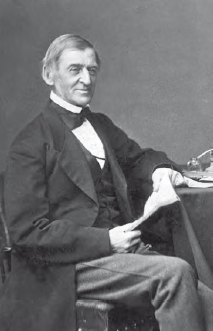American PhilosophyNew England Transcendentalists |
What kind of life did Ralph Waldo Emerson lead? |
Ralph Waldo Emerson (1803–1882) lost his father when he was just eight years old, and was sent to Boston Latin School the next year. He attended Harvard College at 14, where he waited on tables at the commons and tutored to pay for his education. After graduation, he helped his brother in a school for young ladies, which his mother ran in her home. In 1829 Emerson graduated from Harvard Divinity School as a Unitarian minister. But he resigned from that vocation in 1832 because of a disagreement with church administrators. He had married Ellen Louisa Tucker in 1829, but she died of tuberculosis two years later at the age of 20. He mourned her deeply, but had also described himself as “strangely attracted” to a young man while at Harvard, and was later believed to become infatuated with other young men, including author Nathaniel Hawthorne.
During travels in Europe after his wife died, Emerson met authors William Wordsworth, Samuel Taylor Coleridge, and Thomas Carlyle (he would correspond with Carlyle [1795–1881] until his death in 1881), and philosopher John Stuart Mill (1806–1873). In 1835 Emerson bought a house in Concord, Massachusetts, and married Lydia Jackson, with whom he had four children. He was reasonably well off financially (partly due to a lawsuit securing his inheritance from his first wife) and he used part of the money to help Amos Bronson Alcott (1799–1888), his neighbor. Many considered Emerson the greatest orator of his day.

